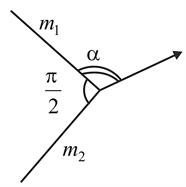A block can slide along an inclined plane in various directions (Fig.). If it receives a certain initial velocity directed downwards along the inclined plane, its motion will be uniformly decelerated, and it comes to rest after traversing a distance . If the velocity of the same
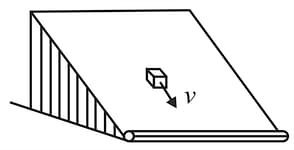
magnitude is imparted to it in the upward direction, it comes to rest after traversing a distance . At the bottom of the inclined
plane, a perfectly smooth horizontal guide is fixed.
Determine the distance traversed by the block over the inclined plane along the guide if the initial velocity of the same magnitude is imparted to it in the horizontal direction?


Important Questions on Mechanics
A block is pushed upwards along the roof forming an angle with the horizontal. The time of the ascent of the block to the upper point was found to be half the time of its descent to the initial point.
Determine the coefficient of friction between the block and the roof.
Two balls are placed as shown in Fig. on a "weightless" support formed by two smooth inclined planes each of which forms an angle $\alpha$ with the horizontal. The support can slide without friction along a horizontal plane. The upper ball of mass is released.
Determine the condition under which the lower ball of mass starts "climbing" up the support.
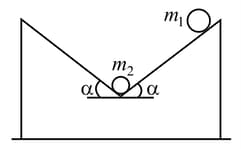
A cylinder of mass and radius rests on two supports of the same height (Fig.). One support is stationary, while the other slides from under the cylinder at a velocity .
Determine the force of normal pressure exerted by the cylinder on the stationary support at the moment when the distance between points and of the supports is , assuming that the supports were very. close to each other at the initial instant. The friction between the cylinder and the supports should be neglected.
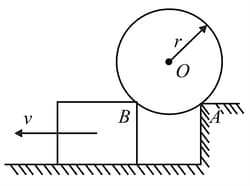
A cylinder and a wedge with a vertical face, touching each other, move along two smooth inclined planes forming the same angle with the horizontal (Fig. ). The masses of the cylinder and the wedge are and respectively.
Determine the force of normal pressure exerted by the wedge on the cylinder, neglecting the friction between them.
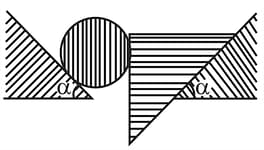
A weightless rod of length with a small load of mass at the end is hinged at point (Fig) and occupies a strictly vertical position, touching a body of mass . A light jerk sets the system in motion.
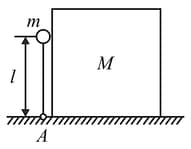
For what mass ratio will the rod form an angle with the horizontal at the moment of the separation from the body? What will be the velocity of the body at this moment? Friction should be neglected.
Two rigidly connected homogeneous rods of the same length and mass and respectively form an angle and rest on a rough horizontal surface (Fig.). The system is uniformly pulled with the help of a string fixed to the vertex of the angle and parallel to the surface.
Determine the angle formed by the string and the rod of mass .
